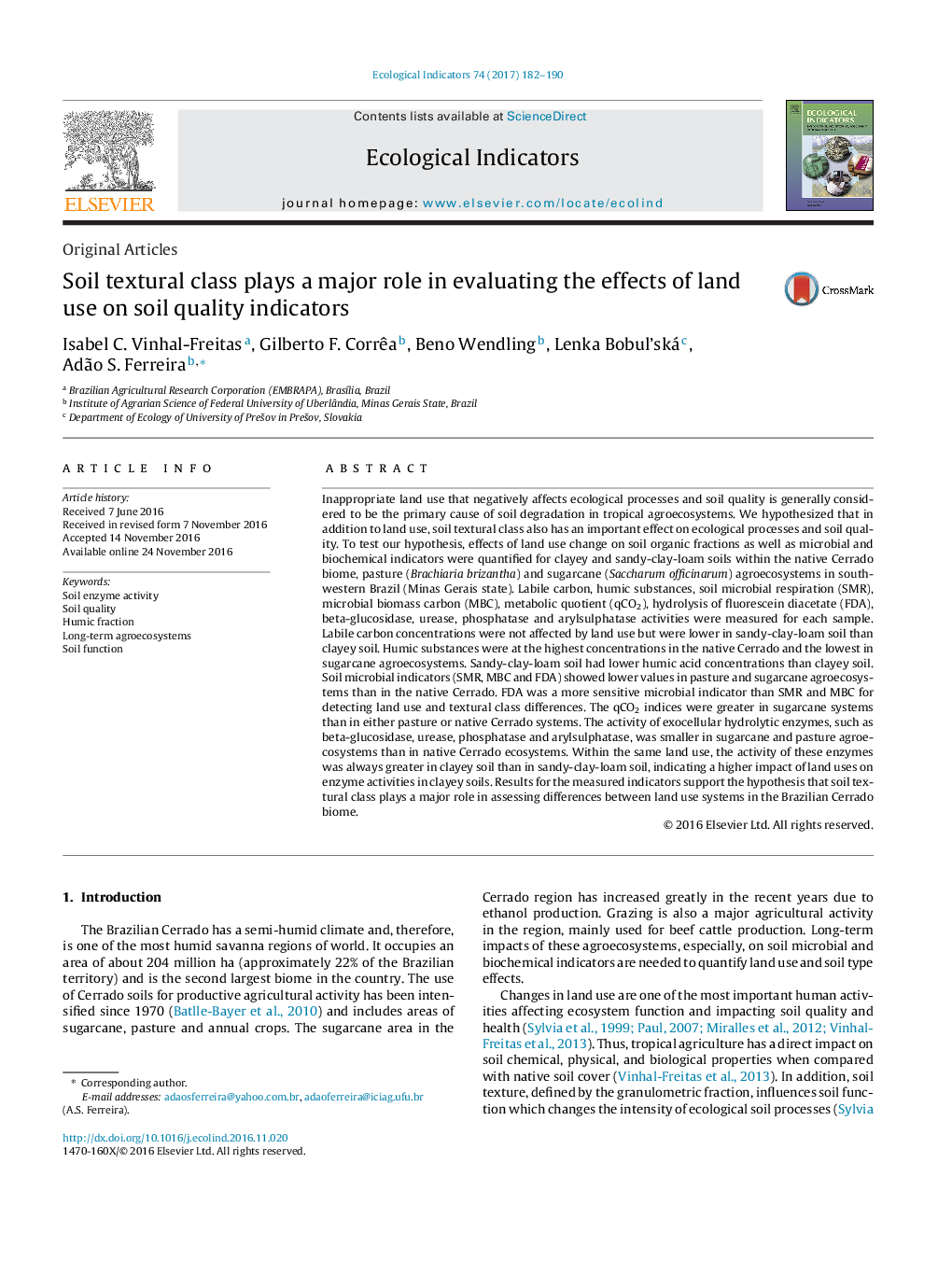| کد مقاله | کد نشریه | سال انتشار | مقاله انگلیسی | نسخه تمام متن |
|---|---|---|---|---|
| 5741846 | 1617128 | 2017 | 9 صفحه PDF | دانلود رایگان |
- Land use in tropical agroecosystems is the main cause of soil degradation.
- Soil microbial and enzymes activities decreased in the order native Cerrado > pasture > sugarcane.
- Soil textural classes had contrasting effects on soil organic fractions, microbial and biochemical indexes.
- Within the same land use, soil microbial and enzyme activities were greater in clayey soil than in sandy-clay-loam soil.
Inappropriate land use that negatively affects ecological processes and soil quality is generally considered to be the primary cause of soil degradation in tropical agroecosystems. We hypothesized that in addition to land use, soil textural class also has an important effect on ecological processes and soil quality. To test our hypothesis, effects of land use change on soil organic fractions as well as microbial and biochemical indicators were quantified for clayey and sandy-clay-loam soils within the native Cerrado biome, pasture (Brachiaria brizantha) and sugarcane (Saccharum officinarum) agroecosystems in southwestern Brazil (Minas Gerais state). Labile carbon, humic substances, soil microbial respiration (SMR), microbial biomass carbon (MBC), metabolic quotient (qCO2), hydrolysis of fluorescein diacetate (FDA), beta-glucosidase, urease, phosphatase and arylsulphatase activities were measured for each sample. Labile carbon concentrations were not affected by land use but were lower in sandy-clay-loam soil than clayey soil. Humic substances were at the highest concentrations in the native Cerrado and the lowest in sugarcane agroecosystems. Sandy-clay-loam soil had lower humic acid concentrations than clayey soil. Soil microbial indicators (SMR, MBC and FDA) showed lower values in pasture and sugarcane agroecosystems than in the native Cerrado. FDA was a more sensitive microbial indicator than SMR and MBC for detecting land use and textural class differences. The qCO2 indices were greater in sugarcane systems than in either pasture or native Cerrado systems. The activity of exocellular hydrolytic enzymes, such as beta-glucosidase, urease, phosphatase and arylsulphatase, was smaller in sugarcane and pasture agroecosystems than in native Cerrado ecosystems. Within the same land use, the activity of these enzymes was always greater in clayey soil than in sandy-clay-loam soil, indicating a higher impact of land uses on enzyme activities in clayey soils. Results for the measured indicators support the hypothesis that soil textural class plays a major role in assessing differences between land use systems in the Brazilian Cerrado biome.
Journal: Ecological Indicators - Volume 74, March 2017, Pages 182-190
